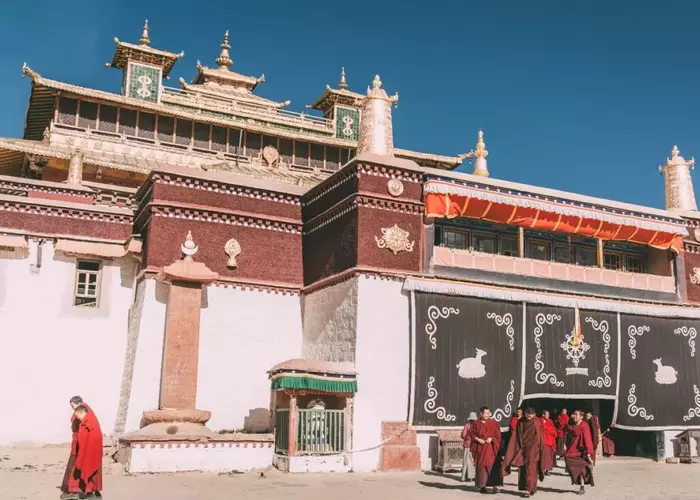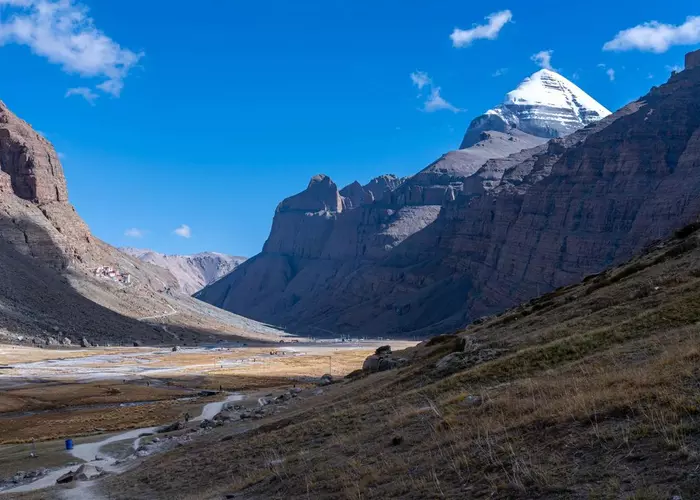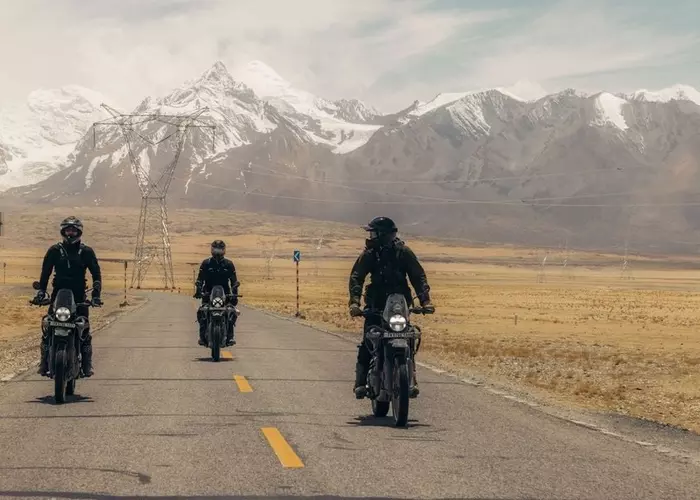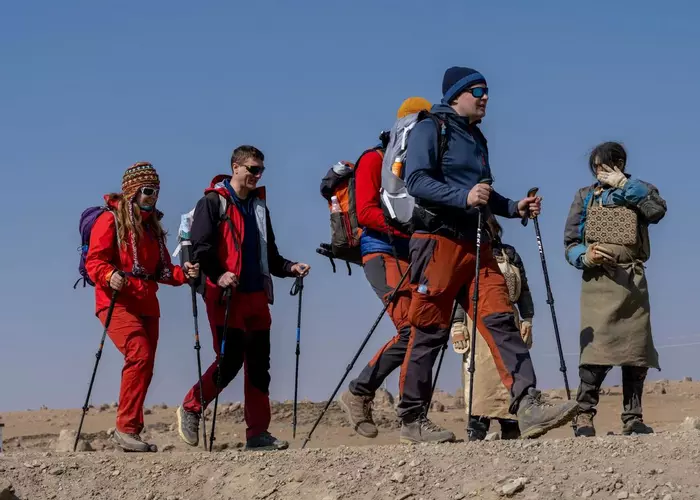Top 15 Things to Do in Lhasa
- Beatrice
- Last Updated : 11/11/2025
Lhasa, known as the "Holy City," is the soul of Tibet. Here you'll find magnificent palaces and monasteries, as well as authentic scenes of daily Tibetan life. Whether you are a devoted pilgrim or a curious traveler, you will feel spiritually touched in Lhasa. These 15 experiences are absolutely not to be missed:
Content Preview
- 1. Climb the Potala Palace
- 2. Worship Jokhang Temple
- 3. Visit Drepung Monastery
- 4. Watch Monks Debating at Sera Monastery
- 5. Stroll Through Summer Palace Norbulingka
- 6. Explore Yaowang Mountain
- 7. Visit Drak Yerpa Hermitage
- 8. Discover the Tibet Museum
- 9. Join Tibetans in a Kora
- 10. Taste Sweet Tea in a Traditional Teahouse
- 11. Savor Tibetan Cuisine and Local Drinks
- 12. Picnic Like a Local in a “Linka”
- 13. Go Birdwatching at Lhalu Wetland
- 14. Cycle in Lhasa
- 15. Shop for Handicrafts on Barkhor Street
- Conclusion
1. Climb the Potala Palace
As the highest ancient palace complex in the world that combines a palace, fortress, and temple, the Potala Palace is the landmark of Lhasa. Since the 7th century, it has served as the winter residence of successive Dalai Lamas. The grand structure is divided into two main parts — the White Palace and the Red Palace. The White Palace once functioned as the living quarters and administrative center of the Dalai Lamas, while the Red Palace enshrines the stupas of past Dalai Lamas and houses numerous precious statues, murals, and scriptures. Climbing the Potala Palace is an unforgettable experience — as you ascend the winding stone steps, the entire city of Lhasa and the distant snow-capped mountains unfold before your eyes in magnificent view.
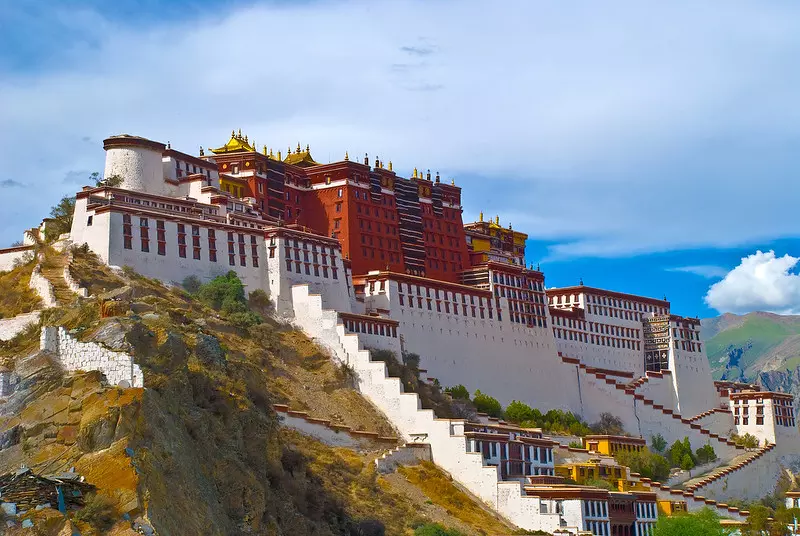
2. Worship Jokhang Temple
Located within Barkhor Street, Jokhang Temple was built by King Songtsen Gampo over 1,300 years ago. It holds supreme status in Tibetan Buddhism. The temple enshrines the life-size statue of 12-year-old Sakyamuni, the most sacred figure for Buddhists and pilgrims. Stepping into the Jokhang Temple, you can feel not only its solemn religious atmosphere but also the Tibetan people's enduring devotion and reverence for their faith over the centuries. In the early morning, under the golden sunlight, devotees prostrate devoutly while the prayer wheels turn slowly. The flickering glow of butter lamps intertwines with the pilgrims' prayers, forming a deeply moving scene unique to Lhasa's spiritual culture.
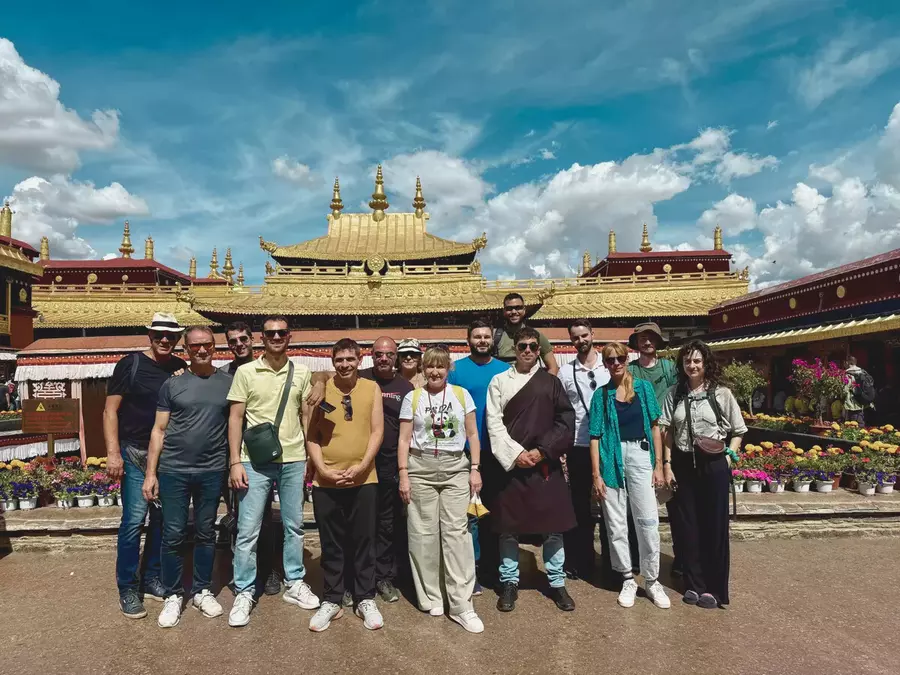
3. Visit Drepung Monastery
As the largest monastery in Tibet and the most important of the Gelug school, Drepung Monastery is named "heap of rice” for its whitewashed buildings scattered across the hillside. Once home to over ten thousand monks, it served as the Dalai Lama's residence before the construction of the Potala Palace. Today, visitors can wander through its vast courtyards, prayer halls, and chapels, where the chanting of monks still echoes through ancient walls. It is an ideal place to learn about Tibetan Buddhism's history, teachings, and monastic life. From its slopes, you can enjoy a panoramic view of Lhasa. During the annual Shoton Festival, a giant thangka of Buddha is unfurled on the hillside, drawing countless pilgrims and visitors to witness this grand and sacred spectacle.

4. Watch Monks Debating at Sera Monastery
Sera Monastery is one of the three great monasteries of Lhasa and has long been a center of Buddhist learning and debate. Founded in the early 15th century, it was once home to thousands of monks studying philosophy, logic, and scriptures. The monastery features grand assembly halls, colleges, and tranquil chapels surrounded by old trees and stone paths. Its most captivating sight is the monk debate — in the northern and rear courtyards, monks in crimson robes engage in lively debates, punctuated by emphatic gestures and clapping. This tradition sharpens logic and deepens understanding of Buddhist doctrine. Visitors can observe it Monday to Saturday, 3:00–5:00 p.m., offering a vivid glimpse into Tibetan monastic life.
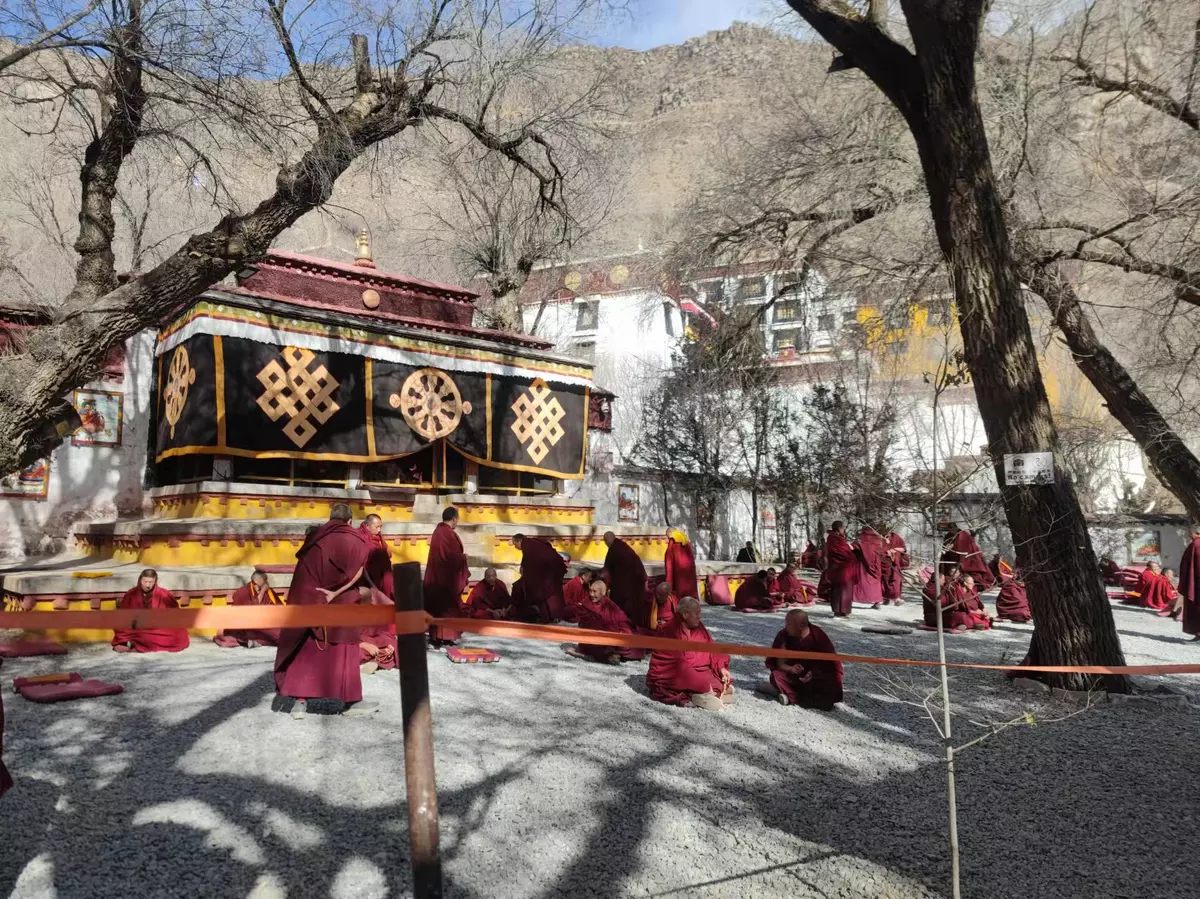
5. Stroll Through Summer Palace Norbulingka
Norbulingka, once the summer palace and garden of successive Dalai Lamas, is a harmonious blend of Tibetan architectural style and Qing dynasty garden design. The “New Palace” combines the serenity of a monastery with the elegance of palace artistry, showcasing intricate woodwork, colorful murals, and spacious halls. Spread across a vast area, Norbulingka features more than 100 plant species, including rare Tibetan hydrangeas and rhododendrons, earning it the title of the“Plateau Botanical Garden." Visitors can stroll along its tree-lined paths, explore pavilions and courtyards, and enjoy seasonal flower displays, making it a perfect place to experience both the cultural heritage and natural beauty of Lhasa.
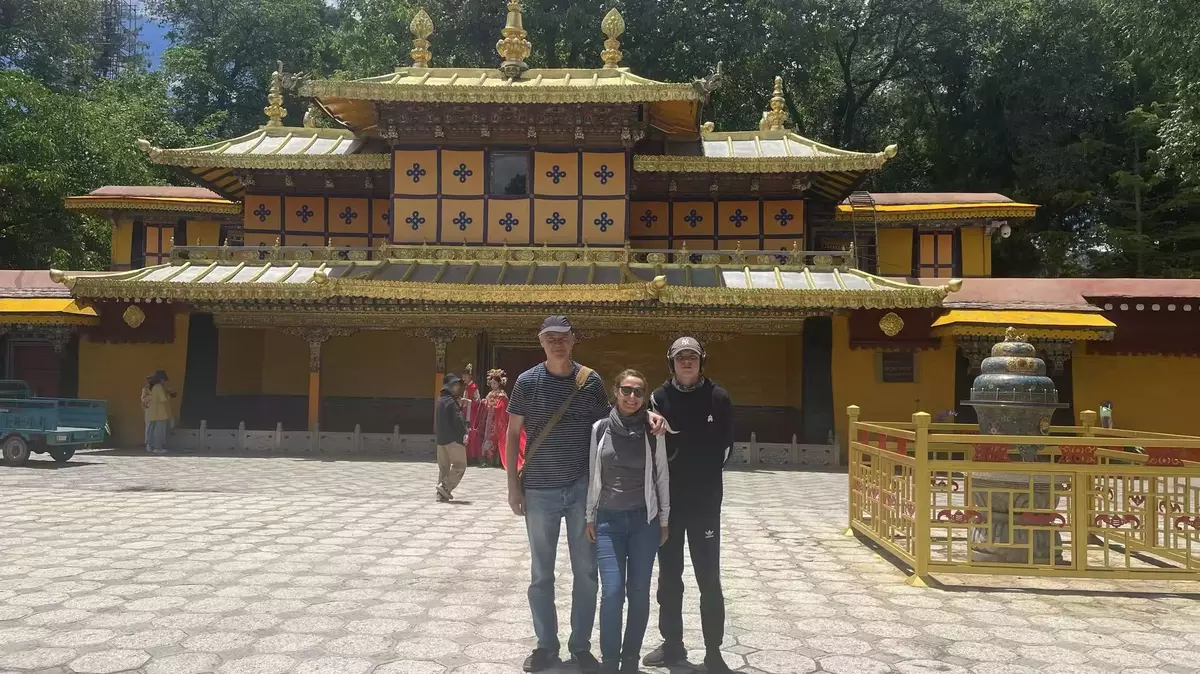
6. Explore Yaowang Mountain
Known in Tibetan as“Jiabozhi, ” meaning “ the mountain at the corner," Yaowang Mountain offers one of the best panoramic views of the Potala Palace. Its southern slope preserves Tang dynasty grottoes dating back over 1,300 years, including a unique central pillar cave built by Songtsen Gampo for his Tang princess Wencheng. Smaller caves and rock carvings scattered along the hillside reflect centuries of Buddhist devotion. On the northern side of Yaowang Mountain stands the Thousand-Buddha Cliff, adorned with colorful and intricate Buddhist carvings that depict religious stories and teachings. Walking along the trails or viewing platforms, visitors can experience both the historical and spiritual richness of the site while enjoying sweeping vistas of Lhasa and the distant snow-capped mountains.

7. Visit Drak Yerpa Hermitage
Drak Yerpa is one of Tibet's four major meditation sites, with a history of 1,500 years. Built by Songtsen Gampo for his queen, Mangza Chi Tsun, the emperor also practiced meditation here. In the 8th century, Guru Padmasambhava visited and established 108 meditation caves. Over the centuries, many eminent lamas have continued to retreat here, making it a key center of Tibetan Buddhist practice. The monastery is built into the cliffs, with some caves embedded in rock and others jutting outward, creating a striking appearance. The temple complex, with the main hall surrounded by colorful prayer flags, exudes solemn grandeur. Along the paths, visitors can enjoy breathtaking views of the valleys and snow-capped mountains, making a pilgrimage both a spiritual journey and a unique experience blending history, faith, and nature.
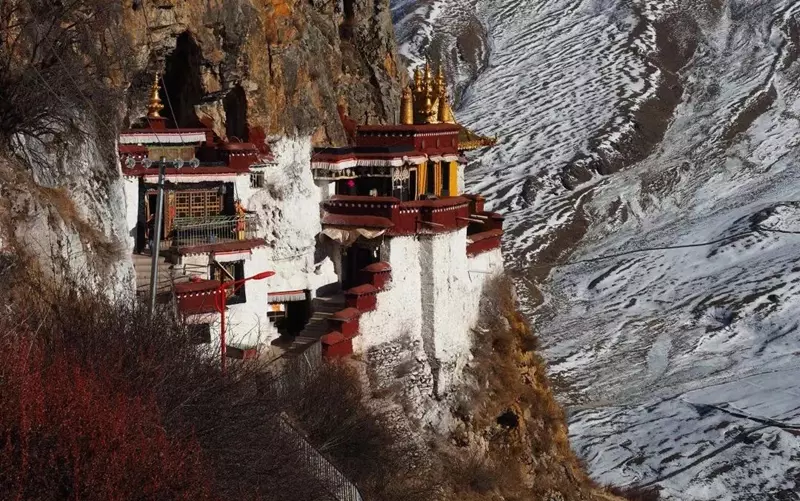
8. Discover the Tibet Museum
Tibet Museum, a national first-class museum, is an architectural gem in traditional Tibetan style, designed to harmonize with the surrounding landscape while showcasing the region's rich cultural heritage. Its exhibits vividly bring Tibetan history, art, and religion to life. Highlights include the double-body pottery jar, golden imperial edict seals, the thangka “Demon-Subduing Map of Tibet,” and the impressive Tibetan opera mask wall. The museum also features collections of ancient manuscripts, ritual objects, and traditional clothing, offering a comprehensive look into Tibet's past and present. From the third-floor terrace, visitors can enjoy sweeping views of Lhasa and the Potala Palace, making the museum not only an educational experience but also a scenic spot where culture, history, and the cityscape converge.

9. Join Tibetans in a Kora
Pilgrims perform circumambulation (Kora) to seek blessings and accumulate merit, and Lhasa is regarded as the spiritual heart of Tibet. The innermost circle around Jokhang Temple's Sakyamuni Chapel is the Nangkor, where devotees often perform full prostrations. The outer circuit along the temple walls, the Barkhor, is lined with shops, prayer wheels, and sacred statues, immersing visitors in the vibrant spiritual atmosphere. The largest circuit, the Lingkor, links the Potala Palace, Yaowang Mountain, and Ramoche Temple, passing through sacred sites and historic streets. Pilgrims walk or prostrate clockwise, chanting and spinning prayer wheels, creating a rhythmic procession that reflects centuries of devotion and offers deep insight into Tibetan Buddhist practice.
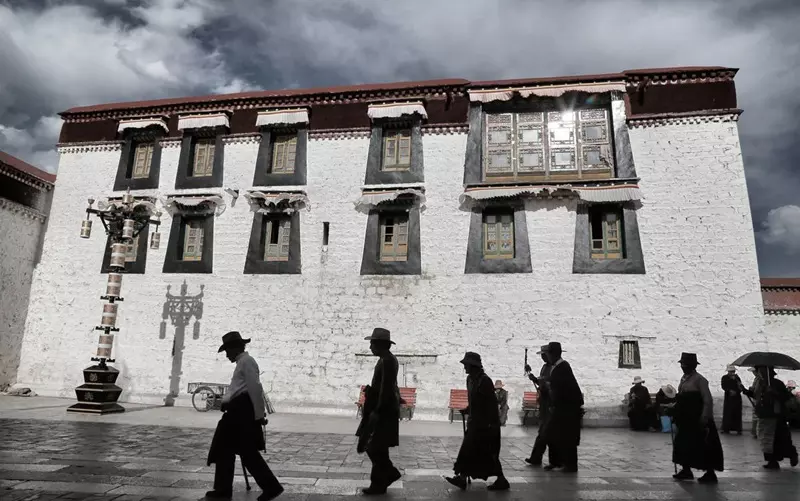
10. Taste Sweet Tea in a Traditional Teahouse
Lhasa's charm lies in the coexistence of holy sites and daily life—pilgrimage routes just steps from bustling shops. Sweet tea, a local specialty, tastes like a blend of milk tea and soy milk, lightly salty yet refreshing. Strolling Barkhor Street, you'll often see Tibetans drinking tea, communicating, or relaxing in cozy teahouses. To experience the most authentic atmosphere, visit Guangming Teahouse, where the rich aroma of butter tea fills the air and locals gather for lively conversation and quiet reflection alike. Sitting here with a steaming cup, you can watch the rhythm of everyday Tibetan life unfold, savor the subtle flavors of traditional tea, and feel intimately connected to the city's culture and community.

11. Savor Tibetan Cuisine and Local Drinks
In Lhasa, a day of flavors begins with a Tibetan breakfast. Morning teahouses are filled with the aroma of butter tea, paired with tsampa, Tibetan noodles, or fried dough — the most authentic start to the day. For lunch, head to Snowland or Lhasa Kitchen near Jokhang Temple, where Tibetan, Nepali, and Indian cuisines blend perfectly and are popular among travelers. Try fried lamb chops, barley wine, yogurt cake, or mutton soup — about 100 RMB per person. Evening is a time to unwind. Enjoy Nepali dishes at Namaste Restaurant or Tibetan-Western fusion at Dunya, along with a glass of Lhasa beer — lightly sweet with hints of honey and floral bitterness. Surrounded by Tibetan music and warm lights, you’ll feel the charm of Lhasa's nights.
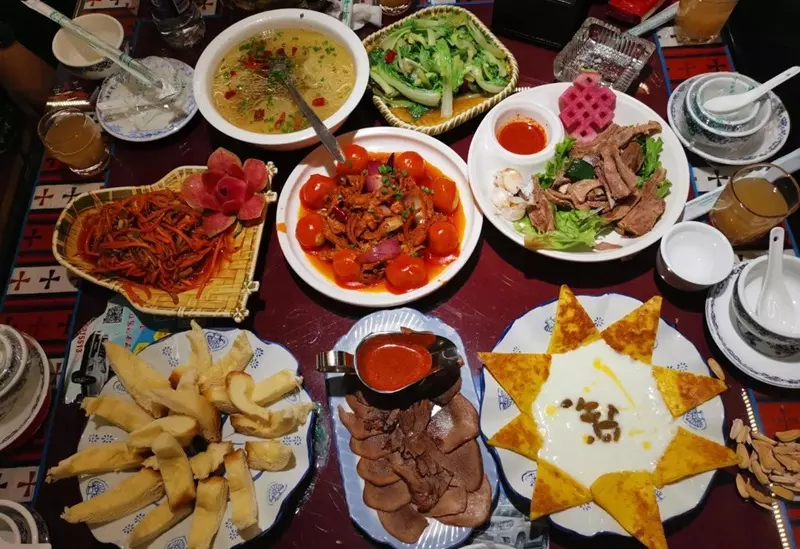
12. Picnic Like a Local in a “Linka”
In Tibetan, “Linka” means "garden," but it also refers to outings and picnics—a favorite leisure activity of locals. The best time to enjoy a Linka is in July and August, when the weather is warm and the landscape lush. Just outside Lhasa, Sangmu Village offers the perfect setting, with flowing streams, green fields, and traditional farmhouses creating an idyllic scene. Visitors may even be welcomed into a local home to sample authentic Tibetan family dishes, offering a rare glimpse into daily life and culinary traditions. A Linka is not just a picnic; it's an opportunity to relax, connect with the local culture, and experience the serene beauty of Tibet beyond the city streets.
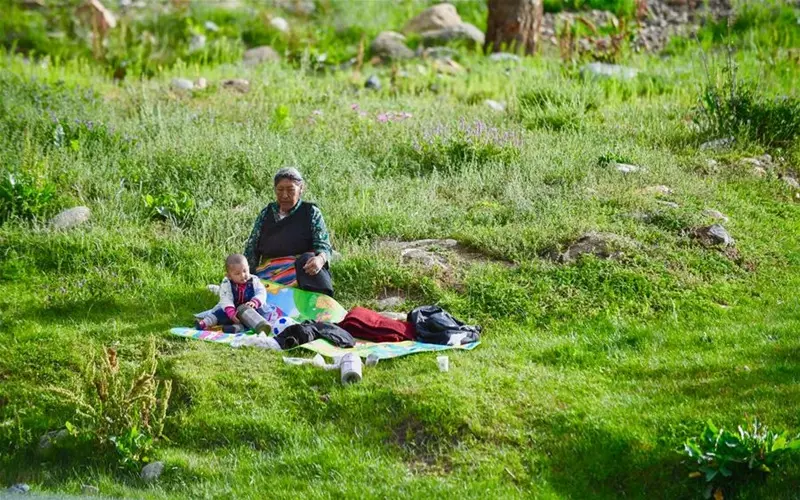
13. Go Birdwatching at Lhalu Wetland
In winter, Lhalu Wetland becomes a haven for migratory birds arriving from northern regions, with February marking the peak season. Black-necked cranes and bar-headed geese glide gracefully across the sky, their elegant movements mirrored in the wetland's calm waters. From the eastern observation deck, visitors can enjoy a breathtaking view where the iconic Potala Palace reflects in the wetlands while flocks soar overhead, creating a harmonious scene of nature and culture. Birdwatching here offers not only a chance to observe rare wildlife but also a serene escape from the city, where the tranquility of the wetland contrasts beautifully with Lhasa's bustling streets.
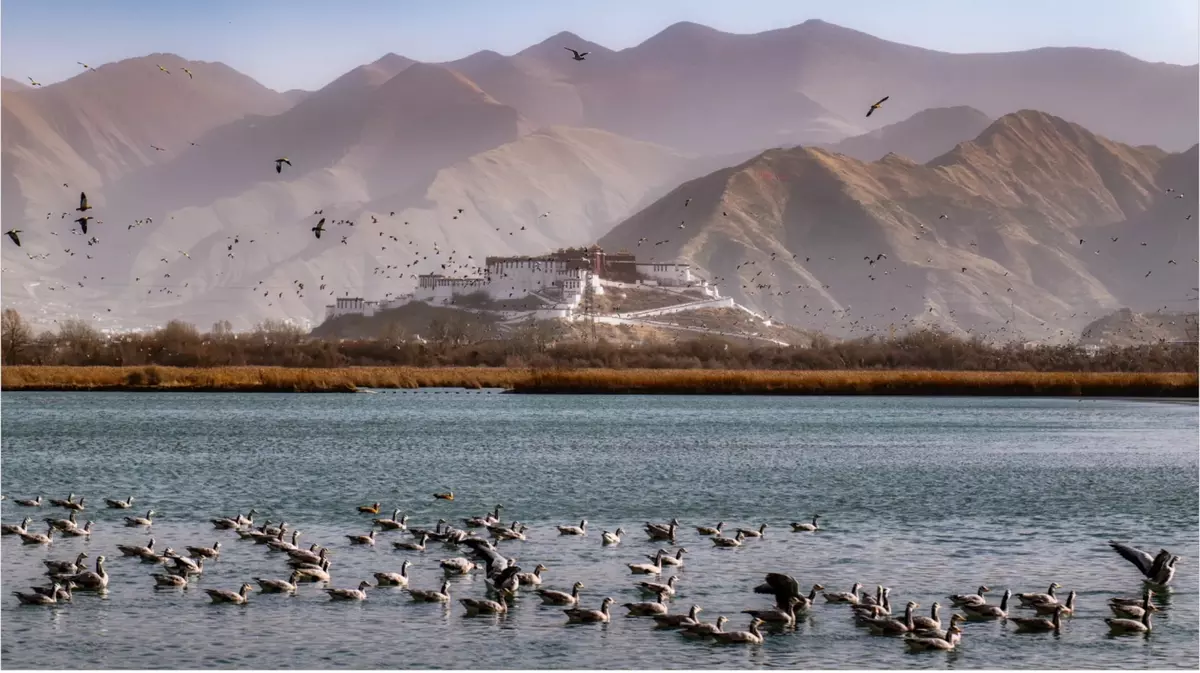
14. Cycle in Lhasa
Cycling in Lhasa is like watching a thangka slowly unfold—each route revealing layers of history and natural beauty. Some paths trace classic circuits around the holy city, highlighting its religious landmarks and historic streets, while others wind through hidden valleys, leading riders into secluded corners of Tibetan life and landscape. Take a leisurely ride along the Lhasa River to catch the sunset over the city, or challenge yourself on the trails up to Pabonka Monastery, the birthplace of Tibetan script, for a mix of history and rugged mountain scenery. For a more tranquil escape, pedal out to Garu Monastery, where rolling fields, traditional villages, and distant snow-capped peaks offer a glimpse of Lhasa’s serene outskirts. Cycling here is not just exercise—it’s a journey through the city’s soul, where every turn brings a new perspective of Tibet.
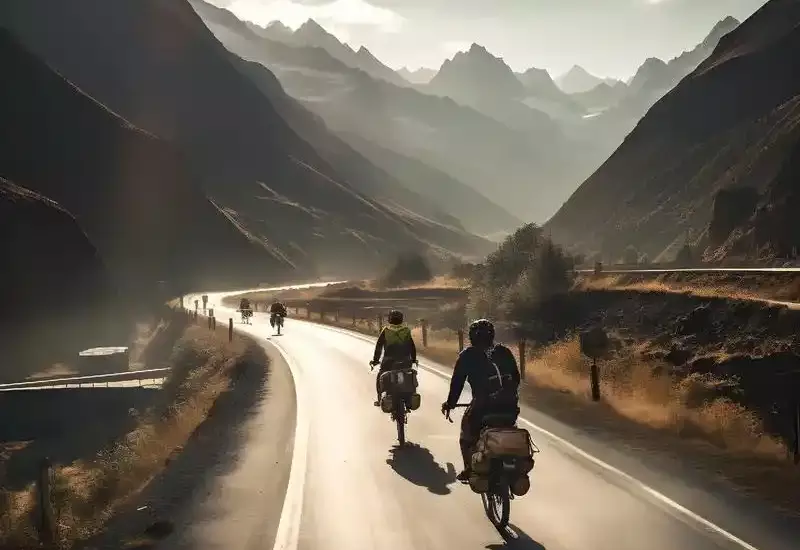
15. Shop for Handicrafts on Barkhor Street
Barkhor Street is one of Lhasa's most vibrant and must-visit marketplaces. Lining both sides of the street are shops and stalls offering traditional Tibetan handicrafts, religious artifacts, and souvenirs crafted by local artisans, alongside curios and goods imported from India and Nepal. The bustling atmosphere is filled with the sights and sounds of daily life, from monks and pilgrims passing by to the chatter of vendors and shoppers. Bargaining is customary, and prices often drop to around half the original asking price—if the seller accepts your offer, it is considered proper etiquette to complete the purchase. Strolling through Barkhor Street is not just a shopping trip; it's a cultural immersion, offering a glimpse into Tibetan craftsmanship, local traditions, and the lively rhythm of the city.
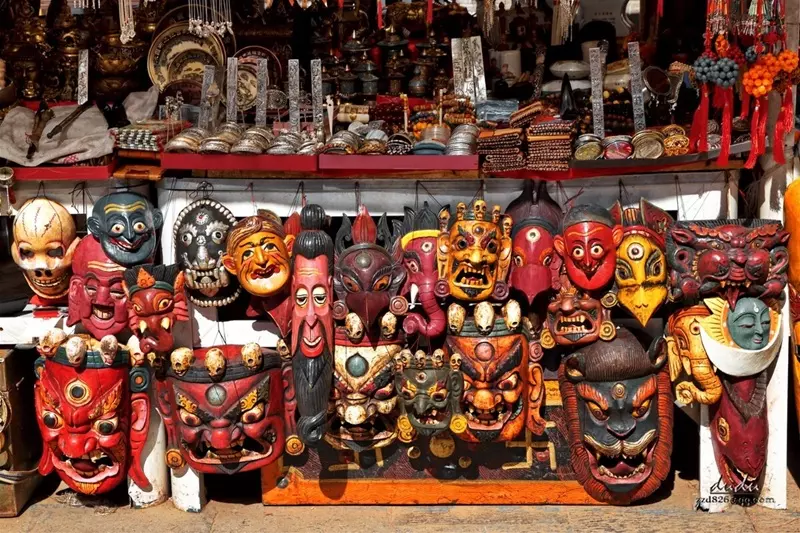
Conclusion
Whether climbing the majestic Potala Palace or sipping sweet tea in a bustling teahouse, Lhasa embodies a rare harmony of faith and daily life. Palaces, monasteries, pilgrimage routes, and vibrant local shops all lie within reach, illuminated by sunlight, prayer flags, chants, and human warmth. Completing these 15 experiences, you’ll discover that Lhasa is not just a travel destination but a journey into the soul of a “Holy City.”
Email response within 0.5~24 hours.



